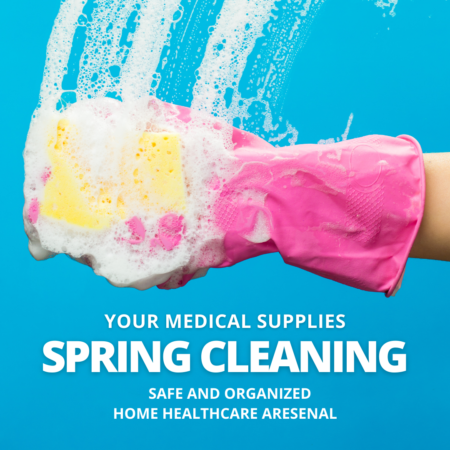 As the flowers bloom and the days grow longer, it’s time to embark on the annual tradition of spring cleaning. While many focus on decluttering closets and scrubbing floors, one area often overlooked is the organization and cleaning of medical supplies at home. Whether you’re managing a chronic condition, recovering from surgery, or simply stocking up on first aid essentials, maintaining clean and organized medical supplies is crucial for both safety and effectiveness. Here are some tips and guidance to ensure your home healthcare arsenal is in top shape this spring.
As the flowers bloom and the days grow longer, it’s time to embark on the annual tradition of spring cleaning. While many focus on decluttering closets and scrubbing floors, one area often overlooked is the organization and cleaning of medical supplies at home. Whether you’re managing a chronic condition, recovering from surgery, or simply stocking up on first aid essentials, maintaining clean and organized medical supplies is crucial for both safety and effectiveness. Here are some tips and guidance to ensure your home healthcare arsenal is in top shape this spring.
Assess and Inventory
Before diving into the cleaning process, take inventory of your medical supplies. Gather all items, including medications, bandages, wound care products, and medical equipment. Discard any expired or unused items, as they may not be safe or effective to use.
Clean and Disinfect Regularly
Regular cleaning and disinfection are essential for preventing the spread of germs and maintaining the efficacy of medical supplies. Follow these steps to properly clean and disinfect your medical items:
- Read the Instructions: Always refer to the manufacturer’s instructions for cleaning and disinfecting specific medical supplies. Different items may require different cleaning methods.
- Use Mild Soap and Water: For most items, including bandages, braces, and non-electrical equipment, mild soap and water are sufficient for cleaning. Gently wash the item with soap and warm water, then rinse thoroughly and allow it to air dry.
- Disinfect Appropriately: Some medical supplies may require additional disinfection to kill harmful bacteria and viruses. Use disinfectant wipes or solutions recommended by healthcare professionals for this purpose. Ensure that the disinfectant is safe for the specific item being cleaned and follow the recommended contact time.
- Pay Attention to High-Touch Surfaces: Focus on cleaning and disinfecting high-touch surfaces, such as medical equipment handles, medication bottle caps, and storage containers.
- Wash Hands Frequently: Remember to wash your hands thoroughly before and after handling medical supplies to reduce the risk of contamination.
Organize for Accessibility
An organized storage system not only ensures easy access to medical supplies when needed but also helps prevent clutter and confusion. Consider the following tips for organizing your medical supplies:
- Label Containers: Use clear containers or bins to store similar items together, such as first aid supplies, medications, and wound care products. Label each container to easily identify its contents.
- Establish Zones: Designate specific areas in your home for storing medical supplies. Keep frequently used items within reach, while storing less frequently used items in a designated storage area.
- Rotate Stock: Regularly check the expiration dates of medications and medical supplies, and rotate stock as needed to ensure that the oldest items are used first.
- Invest in Storage Solutions: Utilize storage solutions such as drawer dividers, shelving units, and hanging organizers to maximize space and keep supplies neatly organized.
- Consider Accessibility: If you have mobility challenges or specific medical needs, ensure that your medical supplies are stored in accessible locations that are easy to reach.
Seek Professional Guidance
If you have any questions or concerns about cleaning, disinfecting, or organizing your medical supplies, don’t hesitate to seek guidance from healthcare professionals or pharmacists. They can provide valuable advice tailored to your specific needs and circumstances.
In Conclusion
Spring cleaning isn’t just about tidying up your living space – it’s also an opportunity to ensure that your home healthcare arsenal is clean, organized, and ready for use. By following these tips and guidance, you can maintain a safe and effective environment for managing your medical needs at home. From cleaning and disinfecting to organizing and inventorying, investing time and effort into your medical supply maintenance will pay off in peace of mind and improved health outcomes.
